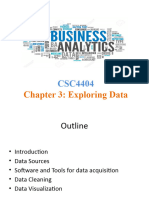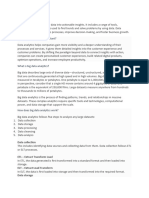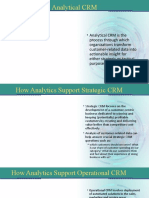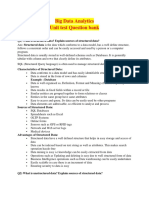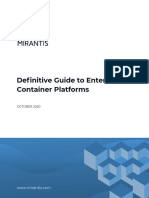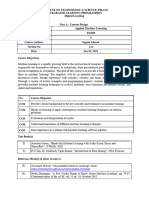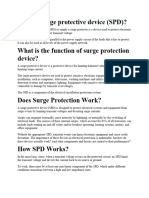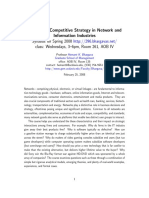0% found this document useful (0 votes)
15 views65 pagesData Analytics and Supporting Services - Module 3-1
Module 3 discusses data analytics, outlining its definition, steps, types, and techniques. It distinguishes between structured and unstructured data, highlighting their characteristics, challenges, and protection methods. Additionally, it addresses the challenges of IoT analytics, emphasizing the need for effective data management and analysis in a rapidly evolving digital landscape.
Uploaded by
rockstar060101Copyright
© © All Rights Reserved
We take content rights seriously. If you suspect this is your content, claim it here.
Available Formats
Download as PDF, TXT or read online on Scribd
0% found this document useful (0 votes)
15 views65 pagesData Analytics and Supporting Services - Module 3-1
Module 3 discusses data analytics, outlining its definition, steps, types, and techniques. It distinguishes between structured and unstructured data, highlighting their characteristics, challenges, and protection methods. Additionally, it addresses the challenges of IoT analytics, emphasizing the need for effective data management and analysis in a rapidly evolving digital landscape.
Uploaded by
rockstar060101Copyright
© © All Rights Reserved
We take content rights seriously. If you suspect this is your content, claim it here.
Available Formats
Download as PDF, TXT or read online on Scribd
/ 65



































